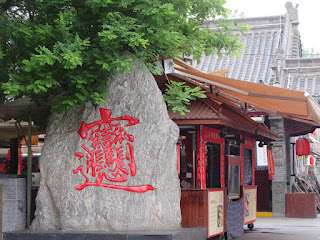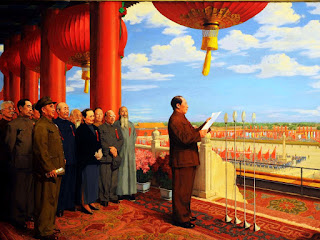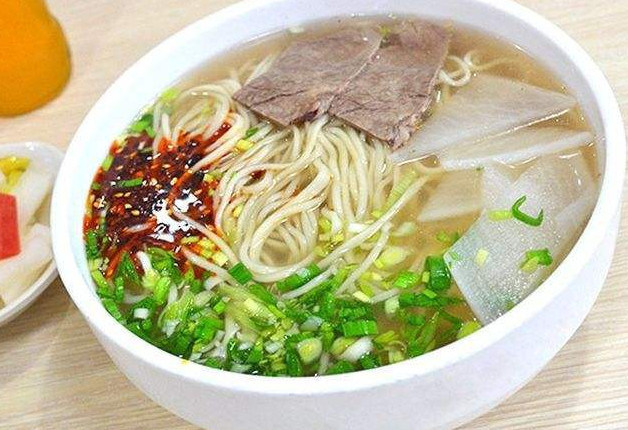Lily In China-Food
Today I wanna would like to share with you the Chinese specialties.
Muslim Quarter
Hidden behind the Drum Tower in the west street, Muslim Quarter is one of the cultural token of Xian. Mainly composed of Hui people who believe Islamism, it also integrated some custom elements from Han people, making it an unique place for leisure seeking, food exploring and folk culture retrospecting. As early as 7th century AD, Muslims had lived in this neighborhood and ever since. They formed their own unique culture and customs and changed little since then. Accessing the area, you will notice that it’s not just one street, it is a large quarter with a few lanes interlacing with each other. Back in the alleys, you will find a dozen of mosques, some of which are great manifesto of integration of Hui and Han architectures. Nowadays, Muslim Quarter is more like a site than a community. Tons of tourists come to hunt for food, or just satisfy their nose.
Muslim Quarter is formed in around 1248 and got extended in 750 years ago. After the Rebellion raised by An Lushan and Shi siming in Tang Dynasty, the glorious Tang Dynasty began to go down side. The famous general Guo Ziyi borrowed Huihe soldiers (ancestors of present Uygur people ) to suppress the rise and after his success, these Huihe Soldiers were brought back to the back-then capital city Chang’an. As a reward for their loyalty, these people were resided in the north area of Chenghuang temple (present North Guangji Street) where it used to within the imperial area. Later on, they learned about Tang Dynasty regulations, laws, and Han customs, that’s why people call their neighbourhood Daxuexi Xiang (learning alley).
In the following two Dynasties, Chang’an became decaying with city scale smaller and population less. Until in Yuan Dynasty when Mongolian troops made their invading journey to the west and brought back people from Central and West Asia, forcing them to marry Han people. In their eyes, Han people were just as low breed as any other captures they acquired. There were a large of portion being Semu people in these captures, who happens to share the similar life style as Huihe people that lived here since Tang Dynasty. Thus, these two ethics were arranged together ever since, forming the present Muslim Quarter. A little fun fact, Semu people got very homesick, that’s why people call them Hui Hui (miss your home and want to come back).
Muslim Quarter refers to four major streets, Beiyuan Gate, Huajue Alley, Xiyang Shi and Dapi Yuan respectively, in which Beiyuan Gate plays an important role. No one would miss here, not just for the countless tempting local food, but also the profound culture deeply rooted here. About 500 meters wide from south to north side, Beiyuan Gate is one of the pillar street that hosting Muslims. The street is built in Ming and Qing architectural style, with gray stone paving the path and trees standing in both sides. It may seem strange to you that there are no large-scale shopping mall here in west street. Instead, all the buildings are all in small size and some of them are even old and broke. Comparing to the prosperous Square of Bell & Drum Tower, this place is rather wretched. It’s said that Muslim Quarter used to be a commercial area where both native and overseas businessmen trading with each other. Lots of stores and shops were built along side. During its prime days, it said here houses 108 stores for food supplies, a dozen of shops for livestock slaughtering. It is always busy and hustling whether it’s business day or not.
As the heritage of Islamic culture, Muslim Quarter still preserves Tang-ear Hanguang Gate, Ming Dynasty City Gate, many more impeccably stored mosques, Taoism Temple, Buddhism West Wutai and lama Guangyuan Temple. Inside the street, thick Islamic flavor soaks everywhere. There is Halal food center, national shopping center, mosques, and once in a while personal living yard.
As a block famous for its various Xian food, although the Muslim Quarter is regarded as a tourism spot for the tourists coming from other places, the locals considered it as the place for snacks and entertainment. Especially in summer, you can find tons of local people having snacks and amusing themselves there. In fact, all the “Huifang” area is filled with restaurants, various Muslim food stalls, in which the widely-praised old shops are available. Besides the Beiyuanmen Street, Daxuexi Street and Xiyangshi, there are also a large area including Dapiyuan, Dongyangshi, Beiguangji Street and Qiaozikou. Old Xian people call these areas as “Fangshang”. In here, you can find the true Xian lifestyle. However, these places need your further discovery.
Muslim Quarter at night is in different splendor as its daytime. The whole street is covered with the thick civil life. All kinds of stalls and shops are standing both sides of the street, selling cakes, dried fruits, preserved fruits and other snacks. Behind the stalls, there are local restaurants and diners. When the weather is pleasant, these restaurants are filled with people. They even need to arrange chairs and tables outside to host customers. In summer, you will find many stalls making roast meat and other food. Their delicious flavor are suffusing everywhere. People are eating while they wander in the site. They also bargain with the stall owner when they are interested in any goods. When you are tired, you can have a rest in the benches of Drum Tower Square. You can watch the vendors selling kites and local people performing local play if you are lucky.
Things Available at Muslim Quarter
Hunt for food
Muslim Quarter is a food paradise, you will find hundreds of food here and each one of them will give your tongue a new experience.Chinese Hamburger (Steamed Bread Sandwiches)
Chinese Hamburger is a popular fast food that combines the main staple of North China - Mo, and meat together, making it a treat. In Muslim Quarter, all the means are beef or mutton. They would make scones and stuff hourly-stewed meat inside the scones. When you have it, you will taste the meat flavor together with the freshly baked scone.
Cold Noodles
Local people call Chinese Hamburger, Cold Noodles and Soda Classic Sanqin Package. How does Cold Noodles get made? Well, it’s made of starches actually, which are from the flour or rice dough. They wash the dough relentlessly until starches completely go inside the water and then place it for a night and collect the starches from the bottom. Next, they would steam the starchy liquid and make it crunchy but soft texture. After cooling off, they would cut the texture into thin ribbons and mix with some side materials like cucumber shreds or bean sprouts in a hand-made sauce, a plate of Cold Noodles is complete!Pita Bread Soaked in Mutton Soup
Another famous local food in Muslim Quarter is Pita Bread Soaked in Mutton Soup. You would be required to tear your own bread into tiny cubes before they are being cooked for you. You can also require the machine-cut bread cubes to be cooked for you, but it won’t be good as you actually teared. You may request it to be fried or just stewed. With side food of pickled garlic and cabbages to fresh your mouth, the mutton soup would be much savoring than ever!Biang Biang Noodles
Shaanxi locals love noodles, especially wide noodles. Walking in the narrow street, you will constantly encounter some chef stretching noodles into long and wide ribbons. Some people can even stretch them into meter long. You may end up having just one same noodle ribbon from the beginning to the very end. That is the charm of Biang Biang noodle.Stick Food
On both side of the street, you will see many Muslim men barbecuing. However, it’s nothing like western style. They would slice the raw meats into small shreds and bunch them together on a wooden stick. After that, they will grill these stick meat on the coal fire. When the meat is almost done, some chili sauce and other seasonings would be sprinkled on the meat, adding more flavor to it.In case you are a veg, don’t worry, you can find some other vegetables clustered on a stick and get grilled on fire, mash-rooms, tofu, eggplants, green vegetables, quail eggs, you name it.
There are of course other famous snacks like Persimmon Doughnuts, Jing Gao, Hammered Candy, Fried Potatoes, Steamed Dumplings, Pomegranate Juice, etc..
Enjoy Shadow Puppets Show
Inside the Gao’s Compound, you will find a small platform that’s used to perform the Shadow Play. At night, you are recommended to sit there and enjoy a traditional Shadow Play. In old times when electricity weren’t discovered, this is one of the major leisure forms. People made paper-cut silhouette and performed at night with candle light shining in the background, accompanying with story telling or singing. In later times, musical instruments were added into the show, which makes the show more entertaining and interesting. In Xian, the background singing would be Qin Opera, which can be quite fervent and exciting.Rubbing
Rubbing refer to the paper pieces that made rubbings from the ancient steles inscribing, images or words from bronzes excavated in old times. This is an ancient traditional artifact. If you are interested, you can learn how to copy the words or images from the steles and household utensils into paper by using rice paper and ink. It will be fun!
Company Name:Shaanxi China Travel Service Co., Ltd Xi'an South Second Ring Branch-Lilysun China Tours
Contactor:Lilysun
Email:lilyprivatetours@hotmail.com
Mobile:8618629295068
Contactor:Lilysun
Email:lilyprivatetours@hotmail.com
Mobile:8618629295068











Comments
Post a Comment